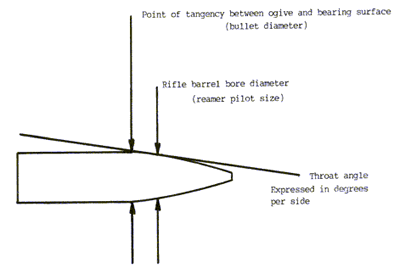BirdDog50
Well-Known Member
Good point!!!You never know, that 2.769 may be where your rifle likes the bullet. I have a few that jump over .100 with very good accuracy.
 Help Support Long Range Hunting Forum
Help Support Long Range Hunting Forum
Good point!!!You never know, that 2.769 may be where your rifle likes the bullet. I have a few that jump over .100 with very good accuracy.
So does that mean you are really left handed..not right?Your post stated 2769 not 2796 I thought I was screwing up on the math so I just deleted what I said lol no biggie I'm pretty dyslexic myself
I am left-handed but due to a right handed world was forced to become ambidextrous lolSo does that mean you are really left handed..not right?
Thanks for the intel regarding your experience with Hybrids & the jump. I'll plan on running some test loads with various options....0.050 etc...Personally if it were me I'd jump them farther than the .020 your mentioning. All of my experience with the Hybrids of varying calibers have shown they like to jump farther. I've had great results in the .050-.070 area of jump and have shown less pressure here also. I jump some even further than this.
Except not all bullets have the same profile whether they are tangent or secant ogive. The ogive to base varies on all bullets.You would think that CBTO is CBTO, once you know what the distance is from bolt face to the lands it would be the same for all bullets when seated to that distance using CBTO to seat bullets, only difference would be the COAL due to different bullet shapes, i.e. some with longer pointed noses or shorter rounder noses. And then the magazine length comes into play.
Except not all bullets have the same profile whether they are tangent or secant ogive. The ogive to base varies on all bullets.
Agree 100% that why you get different measurements for different bullets same caliber & rifle.Correct. I read about this in detail some time ago as bolt face to lands is a constant measurement. The variable comes in from the nose angle of the bullet and how and where it comes in contact with the lands. Quoted below is a good brief explanation I read about on a discussion on loading for a 308 and why it varies.
" The lands are less than .308 in diameter. There is a conical "ramp" going from the .308 freebore to the uncut lands (the leade). This is where the bullet makes contact. And where the bullet makes contact on the leade depends on the angle of the leade and the shape of the bullet."
So if the "ramp" is 30°, 45°, or 60° and the different ogive designs there could actually be up to 0.0xx" difference in CBTO to where the bullet actually touches the lands. Is that ramp angle set by SAAMI or the cartridge developer? Rifle manufacturer or gunsmith can change that as they wish? I checked a 30Nos SAAMI drawing I have on hand and it shows 45° for that ramp, followed by 0.110" of 0.3091" then a 1° 30' taper(the leade?) for a distance of ~ 0.1738", then the bore and groove.Correct. I read about this in detail some time ago as bolt face to lands is a constant measurement. As I understood it the variable comes in from the nose angle of the bullet and how and where it comes in contact with the lands. Quoted below is a good brief explanation I read about on a discussion on loading for a 308 and why it varies.
" The lands are less than .308 in diameter. There is a conical "ramp" going from the .308 freebore to the uncut lands (the leade). This is where the bullet makes contact. And where the bullet makes contact on the leade depends on the angle of the leade and the shape of the bullet."
So if the "ramp" is 30°, 45°, or 60° and the different ogive designs there could actually be up to 0.0xx" difference in CBTO to where the bullet actually touches the lands. Is that ramp angle set by SAAMI or the cartridge developer? Rifle manufacturer or gunsmith can change that as they wish? I checked a 30Nos SAAMI drawing I have on hand and it shows 45° for that ramp, followed by 0.110" of 0.3091" then a 1° 30' taper(the leade?) for a distance of ~ 0.1738", then the bore and groove.

Don't worry about the OP's thread (me) this intel is very informative & I'm sureIn most cases from what I understand the ramp in most is 1.5 degrees. I'm not an expert by any means but here's a article from Lilja the barrel experts that does a great job of explaining it. Sorry if we're derailing the OPs thread.

A Look at Bullet Ogives and Chamber Throat Angles - Lilja
After ordering a new set of bullet dies recently, I began to wonder how the new ogive shape that I had decided on would compare to the throat angle of my chamber reamer. Typically the reamer makers will grind a one and a half degree angle on the throat (or leade, as it is sometimes... View Articleriflebarrels.com